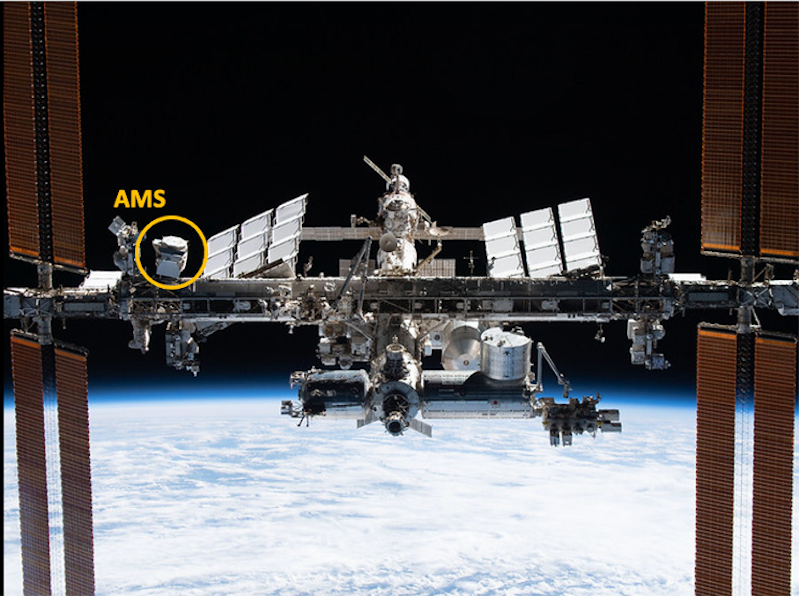AMS reports on temporal structures in electron spectra and charge sign effects in galactic cosmic rays
The AMS collaboration, led by Nobel Laureate academician Samuel C.C. Ting, announced the latest results on the measurement of the cosmic ray electron fluxes. Based on an entire solar cycle worth of data from the International Space Station’s Alpha Magnetic Spectrometer (AMS), this new study provides unique information about electrons that are rarely seen in cosmic rays.
Cosmic rays are dominated by positively charged particles and nuclei: protons, helium, etc. Electrons are the most abundant negatively charged particles, making up only about 1% of the cosmic rays. The precision study of cosmic electrons requires a magnetic spectrometer in space to separate electrons from the overwhelming number of positively charged particles and nuclei. Since installation on the Space Station, for a complete solar cycle (11 years), AMS has continuously collected and analyzed electron events daily, a total of 200 million electrons. Nearly all of these events are in the energy range below 42 GeV. The unexpected properties of these events are the subject of this publication.
The electron fluxes exhibit variations on multiple time scales. Recurrent electron flux variations with periods of 27 days, 13.5 days, and 9 days are observed. AMS found that the electron fluxes show distinctly different time variations from the proton fluxes. Remarkably, a hysteresis between the electron flux and the proton flux is observed. Furthermore, structures in the electron-proton hysteresis are observed corresponding to sharp structures in both fluxes. This data provides unique input to the understanding of the charge sign dependence of cosmic rays over an eleven-year solar cycle.

Journal Links: https://journals.aps.org/prl/abstract/10.1103/PhysRevLett.130.161001
WebSite: https://physics.aps.org/articles/v16/62